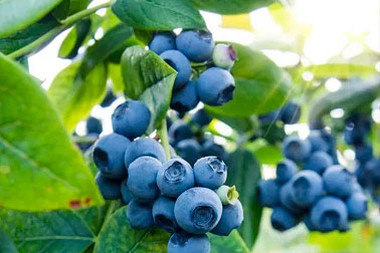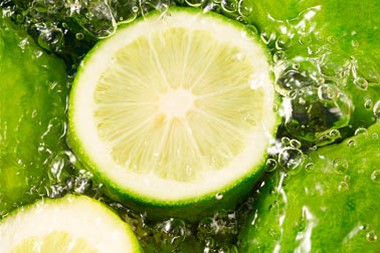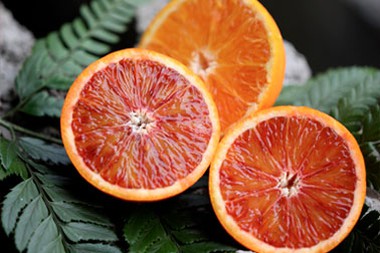What is Flavonoids
Flavonoids are a kind of secondary metabolites of plants, which widely exist in a variety of plants. They are not only numerous and diverse, but also have complex and diverse structural types. Flavonoids have many important physiological and biochemical effects on mammals and other types of cells due to their unique chemical structures, and are effective ingredients of many Chinese herbal medicines. It is reported that moderate intake of flavonoids can reduce the incidence of cancer, tumor, cardiovascular disease, lipid peroxidation, osteoporosis and other diseases. Therefore, it has attracted extensive attention of chemists at home and abroad, and the research progress is very fast in recent years. With the in-depth study of its structure-activity relationship, the mechanism of some pharmacological effects of flavonoids has been found, which provides a theoretical basis for its application in the field of medicine and food, and speeds up the development and utilization of flavonoids.
Function
1. Flavone is a compound that can diminish inflammation and toxin, improve sleep, protect heart and brain, and has the functions of regulating body function, anti-aging, improving blood circulation, promoting metabolism, etc.
2. Flavone has many effects. It is a strong antioxidant, which can effectively eliminate oxygen free radicals in the body. For example, anthocyanin can inhibit the overflow of lipid peroxides in the whole stage. This antioxidant effect can prevent cell degradation and aging, and also prevent the occurrence of cancer. Flavonoids can improve blood circulation and reduce cholesterol. Flavonoids in Xiangtianguo also contain a PAF anticoagulant factor, which can greatly reduce the incidence of cardiovascular and cerebrovascular diseases and also improve the symptoms of cardiovascular and cerebrovascular diseases. Flavonoids can inhibit the exudation of inflammatory biological enzymes, improve wound healing and relieve pain. Quercetin can be used for various sensitivities due to its strong antihistamine property.

Flavonoids can be extracted in the following ways
1. Alcohol extraction method
Organic solvent extraction is the most commonly used method for extracting Flavonoids. The commonly used organic solvents include ethanol, ether, methanol and ethyl acetate, among which ethanol is the most commonly used. Gan Xiuhai et al. obtained flavonoids from Pyracantha fortuneana fruit by alcohol extraction. The optimal extraction process was 70% ethanol concentration, 120 (g/ml) material to liquid ratio, 70 �� extraction temperature, 4h extraction time and 1.316% extraction rate. In addition, we also found that in order to improve the purity of flavonoids, petroleum ether or hexane can be added for degreasing or depigmenting before ethanol or ethanol aqueous solution extraction, with better effect.
2. Ultrasonic extraction method
Ultrasonic extraction has the advantages of convenient operation and short extraction time. It is a widely used method to extract flavonoids from medicinal plants. Bian Jiesong obtained 8.36mg/g and the recovery rate was 99.56% when he determined the total flavonoids in Saddlegrass by ultrasonic method. In addition, the combination of alcohol extraction method and ultrasonic extraction method has satisfactory results. Huang Yunhong obtained the best extraction process of flavonoids from navel orange peel by combining ultrasonic wave with ethanol extraction ultrasonic power 125W, ethanol concentration 60%, material liquid ratio 135 (g/ml), ultrasonic time 60min, and the extraction rate was 49.3mg/g.
3. Microwave extraction method
Microwave extraction technology, also known as microwave extraction technology, has the greatest advantages of less energy and materials consumption, no pollution, and high selectivity for the extraction of specific medicinal materials. Yanrui extracted flavonoids from aloe by microwave. The final process was microwave power 560W, ethanol concentration 80%, material to liquid ratio 15, extraction time 30s, and the extraction rate was 0.052%. Compared with ultrasonic extraction, the extraction rate was 0.15 times higher. Dong Liangyun et al. used microwave assisted extraction of flavonoids from bayberry pulp. The maximum extraction rate was 3.45% under the conditions of low microwave, 140 ratio of material to liquid, 60.0% ethanol concentration and 4.0min extraction.
4. Supercritical extraction technology
Supercritical fluid extraction (SFE) is a widely used method for drug extraction and separation. Its greatest advantage is that there is no residual organic solvent and the extracted components are 100% natural. Wang Min explored the best process for extracting flavonoids from ginkgo biloba leaves by supercritical extraction technology through experiments the flow rate of CO2 is 20L/h, the concentration of ethanol is 80%, the amount of ethanol entrainer is 100ml/100g ginkgo biloba leaves, the extraction pressure is 30MPa, the temperature is 45 ��, and the extraction time is 2h. Under the conditions of 75% ethanol concentration, 0.4 m/h CO2 flow rate, 8 MPa extraction pressure and 40% temperature, the extraction rate of flavonoids was 1.245 times that of solvent extraction.
5. Enzymolysis
Enzymatic hydrolysis is a better auxiliary extraction method. The enzyme has high selectivity, so the selection of appropriate enzyme has a great impact on the extraction rate for different extraction materials. In the process of extracting flavonoids from Rosa laevigata, Lin Xuanxian used single enzyme treatment and compound enzyme treatment respectively to conduct comparative experiments. The results showed that the treatment effect of compound enzyme was significantly better than that of single enzyme, and the yield of total flavonoids in Rosa laevigata was increased by 26.2% after the auxiliary treatment of compound enzyme.
6. Membrane separation and extraction method
Membrane separation technology is also a commonly used auxiliary extraction technology. Ultrafiltration, as the only molecular level separation method, is widely used in the extraction and separation of flavonoids. The greatest advantage of using ultrafiltration technology to separate and purify flavonoids is that it is easy to operate, without heating, without destroying the structure of active ingredients, and the purification and concentration are completed in one step. The ultrafiltration device can also be used repeatedly. Yu Tao and others successfully optimized the extraction of flavonoids from ginkgo biloba leaves by using membrane separation method in the study of the technological conditions affecting the ultrafiltration effect, and the content of flavonoids in the product reached 33.99%.
please contact us at email: selina@ciybio.com.cn



